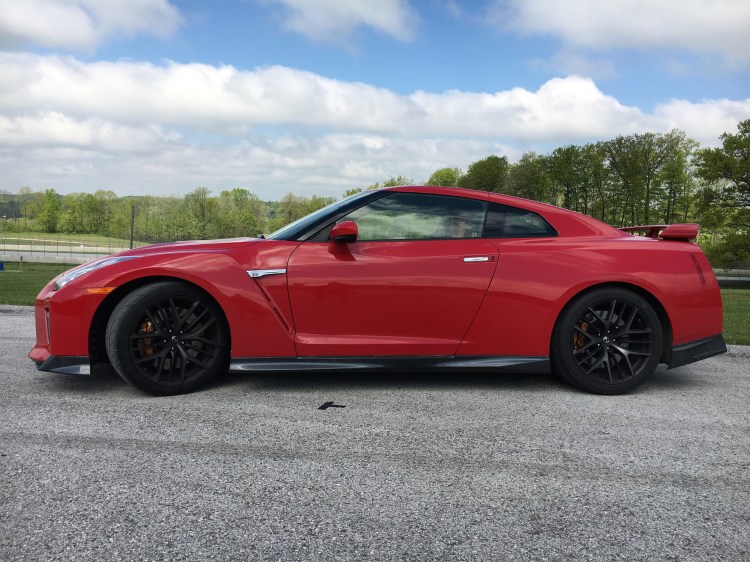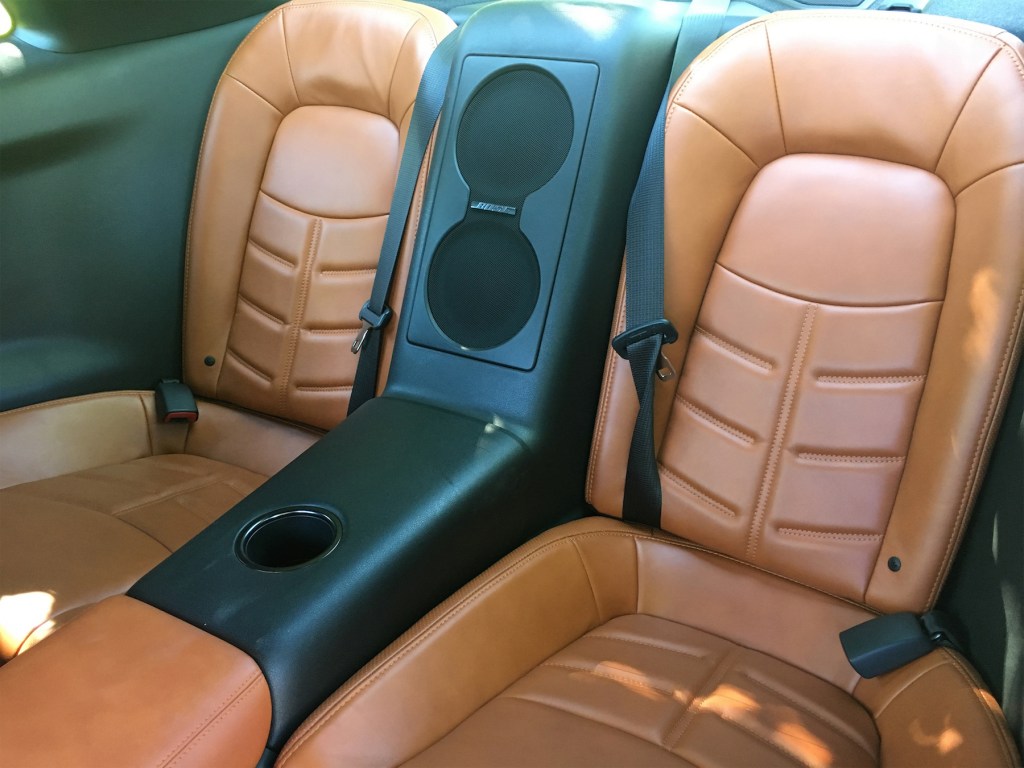A white blur in the rearview mirror zigzagged up to us in the midst of Memorial Day traffic. It was a Volkswagen wagon, filled with five teenage boys baiting me to race.
There was nothing but taillights up ahead. I waved, they returned a less friendly gesture and spurted stupidly ahead.
Off the next ramp, with an empty country road stretching out straight as a rail, I gave in to temptation.
The Nissan GT-R is a time machine. Every time I floored it, my stomach lifted in opposition to the gravity of adulthood, and a small but rapturous part of me felt like those feral idiots in the VW. Unbound, unbothered, rocketing down a road where consequence only existed in the next second.
The wagon boys and I weren’t alone in our admiration.
Two teens on bikes jumped the curb into the parking lot and started with the selfies, commenting, perhaps, on the broader grille with larger air intakes, the more sculpted hood, the Tennessee plates from Nissan’s North American headquarters. The reality of GT-R beyond video games.
It wasn’t just young people marveling at the rare appearance of a supercar on suburban streets.
“Sweet ride, man,” said a man who had probably just come of legal driving age when the first GT-R arrived in the U.S. in 2008.
The GT-R has come of age in 2017 with its most significant update. The 565-horsepower sports coupe has a more pronounced lip and side sills to help with airflow, and the blocky rear is chunkier, more menacing. Godzilla, as it is known, is growing into its body.
Why does Godzilla in the wild elicit such reverence? It’s part newness, part Nissan. The uninitiated recognize its power but doubt the Nissan badge better known for crossovers.
It starts at $109,990 and sells only about 1,000 annually, roughly a tenth of the Porsche 911 and all its iterations. Just about anyone can identify a 911, even if they mispronounce Porsche (hint: two syllables, not one).
GT-R is rare. Young and special.
Admirers of the GT-R are, in their own minds I suspect, purer. Being in the know of a rarer sports car, and a Nissan no less, keeps poseurs and dilettantes from tainting that exclusive GT-R fan base.
Godzilla fans know that it is quick, sick quick, hitting 60 mph in 2.9 seconds, and it is fast, blazing fast, attaining a top speed of 191 mph, according to Car and Driver.
That quickness from the 3.8-liter twin-turbo V-6 starts taking your breath away at the 2,000 rpm range, but it keeps intensifying until hitting peak 467 pound-feet of torque between 3,300 and 5,800 rpm.
Staying on the accelerator can cause fear, unfettered feral fear, every sense howling like the glorious engine noise, vibrating, screaming, swirling inside the cabin and your chest – it is awesome in every sense of the word.
The long, thin paddle shifters are mounted to the steering column, but the six-speed dual clutch automatic is quicker and smarter. It knows what you want so it is best just to steer.
While the handcrafted engine remains relatively the same since the beginning, with a signed plate by the one engineer who worked on that specific engine, the engineers keep tweaking the GT-R, so the 565 horsepower is 20 horsepower more than last year’s model.
The most significant appeal of the GT-R is its versatility. Not like a hatchback versatile, more like driver-style versatile.
It is immensely accessible. The long wheelbase, low center, near perfect weight distribution from a front-mounted engine are complemented with an all-wheel-drive system that inspires confidence in less experienced drivers and tempts more experienced drivers to lose their, umm, wagon.
GT-R is called Godzilla (by me anyway) for how massively and surprisingly its power can erupt, yet for how docile and comfortably it can hold drivers on longer trips. It also comes roaring out of turns with better balance than any car we’ve driven.
The most significant updates for 2017 are in Godzilla’s living room. We drove back-to-back trips about 150 miles each to our neighbor state to the north, and had no fatigue or cramping as in other cars of this kind.
Nissan says it beefed up the noise cancellation and dampened the harshness; we didn’t notice any undue road noise or back-breaking suspension stiffness. It might seem inconsequential in this context, but we averaged 23 mpg on our road trips.
There’s a spaciousness in its roofline and cabin – not enough to fit anyone behind the driver in the 2+2 layout, but good enough to get two kids around town. And that trunk! At 8.8 cubic feet, it fit my daughter’s hockey bag better than some hatchbacks. Two sets of clubs should be doable.
The guy at the coffee drive-thru whistled and said, “Nice saddleback interior. Wow.”
Technically, the rakuda tan seats with hand-stitched interior were semi-aniline leather, meaning the dye maintained the texture of the surface, as part of the $4,000 premium interior package instead of plain-Jane Recaro racing seats.
The center dash has slimmed down from 27 controls to just 11, centered by an 8-inch touch screen that is easy to use. Nissan’s insistence on buttons, dials and way too many of everything has turned us off in other models, and we hope the controller dial on the carbon-fiber center console, which supplements the touch screen so you can zoom in and out of a map by just turning the dial, for instance, will make its way in all Nissan products.
There’s a balance inside and out, on the track or around town, uncommon in a supercar such as this. This rare breed of car, which makes novice drivers feel confident and confident drivers push their limits, is worth the stranger selfie, the admiring nods, even perhaps an appreciative taunt from a wagon full of fools.
Godzilla is that good.
Send questions/comments to the editors.




Success. Please wait for the page to reload. If the page does not reload within 5 seconds, please refresh the page.
Enter your email and password to access comments.
Hi, to comment on stories you must . This profile is in addition to your subscription and website login.
Already have a commenting profile? .
Invalid username/password.
Please check your email to confirm and complete your registration.
Only subscribers are eligible to post comments. Please subscribe or login first for digital access. Here’s why.
Use the form below to reset your password. When you've submitted your account email, we will send an email with a reset code.